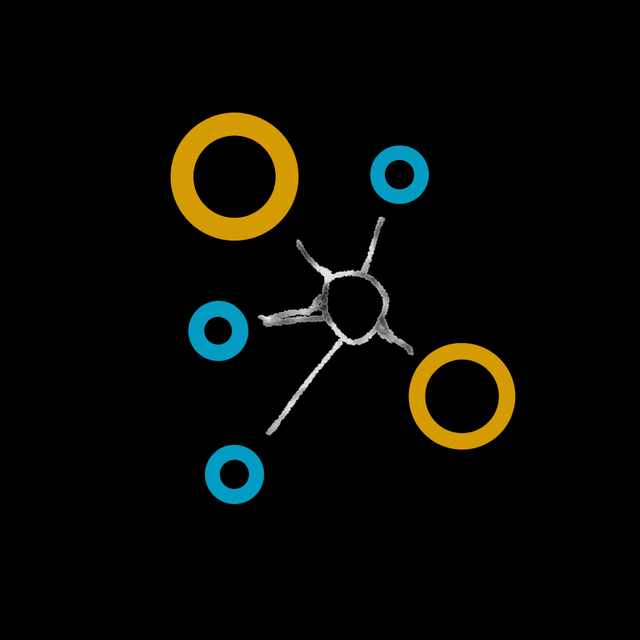THE COMPARATIVE STUDY ANALYSIS LOGICAL FILES RECOVERY AND LOW LEVEL FILES RECOVERY USING DIGITAL FORENSIC METHODS
##plugins.themes.academic_pro.article.main##
Abstract
The development of application and network technology is currently so rapid. This technology is widely used as a solution to overcome data inspection problems in the field of Digital Forensics. The importance of Digital Forensics as evidence, especially on computers and mobile devices, is increasing, along with the rapid use of these mobile devices in daily communication. Data and files on computers and smartphones can be deleted intentionally or unintentionally. To recover the data, it is necessary to have Files Recovery. Furthermore, Logical Files Recovery can be made through password encryption, obtained through hack/attack password applications such as Password or even hacked with the "RecoveryMyFile" application. In addition, a search with a file that has a password description can be done. One of the file recovery applications that can be used is the Agent ransack search application, which is more powerful and convenient than Windows Search, which is more complicated if you need to search faster, indexing needs to be done, and restarts. By using Files Recovery analysis, the development of file or data deletion crimes can be overcome with increasingly rapid and advanced information technology, in this case through applications that can be used for file recovery and to restore deleted files.
##plugins.themes.academic_pro.article.details##

This work is licensed under a Creative Commons Attribution-NoDerivatives 4.0 International License.
References
- T. E. Bracewell and C. Jones, "The use of simulated crime scenes in teaching undergraduate forensic sciences: Implementing an active learning approach to forensics," Science & Justice, 2022, doi: 10.1016/j.scijus.2022.08.003.
- R. Buyya, C. S. Yeo, S. Venugopal, J. Broberg, and I. Brandic, "Cloud computing and emerging IT platforms: Vision, hype, and reality for delivering computing as the 5th utility," Future Generation computer systems, vol. 25, no. 6, pp. 599-616, 2009.
- T. Holt and D. S. Dolliver, "Exploring digital evidence recognition among front-line law enforcement officers at fatal crash scenes," Forensic Science International: Digital Investigation, vol. 37, 2021, doi: 10.1016/j.fsidi.2021.301167.
- Y. Azzery, N. Dwi Mulyanto, and T. Hidayat, "Memory Forensic Development and Challenges in Identifying Digital Crime : A Review," Teknokom, vol. 5, no. 1, pp. 96-102, 2022, doi: 10.31943/teknokom.v5i1.73.
- F. Holz, M. F. Saulich, A. S. Schroder, C. G. Birngruber, M. A. Verhoff, and S. Plenzig, "Death abroad: Medico-legal autopsy results of repatriated corpses: A retrospective analysis of cases at the Department of Legal Medicine in Frankfurt am Main," Forensic Sci Int, vol. 310, p. 110257, May 2020, doi: 10.1016/j.forsciint.2020.110257.
- G. Horsman, "Digital evidence and the crime scene," Sci Justice, vol. 61, no. 6, pp. 761-770, Nov 2021, doi: 10.1016/j.scijus.2021.10.003.
- C. Shi, J. C. Dumville, H. Juwale, C. Moran, and R. Atkinson, "Evidence assessing the development, evaluation and implementation of digital health technologies in wound care: A rapid scoping review," J Tissue Viability, Sep 27 2022, doi: 10.1016/j.jtv.2022.09.006.
- G. Tutt and S. Hoffmann, "Forensics in motion - Historic vehicles, genuine or fake?," Forensic Sci Int Synerg, vol. 4, p. 100218, 2022, doi: 10.1016/j.fsisyn.2022.100218.
- S. Park et al., "A comparative study on data protection legislations and government standards to implement Digital Forensic Readiness as mandatory requirement," Digital Investigation, vol. 24, pp. S93-S100, 2018, doi: 10.1016/j.diin.2018.01.012.
- A. O. Philip and R. K. Saravanaguru, "Smart contract based digital evidence management framework over blockchain for vehicle accident investigation in IoV era," Journal of King Saud University - Computer and Information Sciences, vol. 34, no. 7, pp. 4031-4046, 2022, doi: 10.1016/j.jksuci.2022.06.001.
- D. Seddiki, S. G. Galán, J. E. M. Expósito, M. V. Ibañez, T. Marciniak, and R. J. Pérez de Prado, "Sustainable expert virtual machine migration in dynamic clouds," Computers and Electrical Engineering, vol. 102, p. 108257, 2022/09/01/ 2022, doi: https://doi.org/10.1016/j.compeleceng.2022.108257.
- M. Arif, A. K. Kiani, and J. Qadir, "Machine learning based optimized live virtual machine migration over WAN links," Telecommunication Systems, vol. 64, no. 2, pp. 245-257, 2017.
- D. Scheffer et al., "Active mixture of serum-circulating small molecules selectively inhibits proliferation and triggers apoptosis in cancer cells via induction of ER stress," Cell Signal, vol. 65, p. 109426, Jan 2020, doi: 10.1016/j.cellsig.2019.109426.
- M. Aiash, G. Mapp, and O. Gemikonakli, "Secure live virtual machines migration: issues and solutions," in 2014 28th International Conference on Advanced Information Networking and Applications Workshops, 2014: IEEE, pp. 160-165.
- F. Xu, F. Liu, L. Liu, H. Jin, B. Li, and B. Li, "iAware: Making live migration of virtual machines interference-aware in the cloud," IEEE Transactions on Computers, vol. 63, no. 12, pp. 3012-3025, 2013.
Most read articles by the same author(s)
- Alfin Alif Syaiji, Rahmat Hidayat, SISTEM OTOMATISASI PEMANAS AIR MENGGUNAKAN SENSOR DHT11 BERBASIS ARDUINO UNO , TEKNOKOM: Vol. 6 No. 2 (2023): TEKNOKOM
- Abdul Jalil, Rahmat Hidayat, SISTEM DETEKSI MUTU TELUR AYAM RAS MENGGUNAKAN SENSOR LDR (LIGHT DEPENDENT RESISTOR) BERBASIS ARDUINO UNO , TEKNOKOM: Vol. 7 No. 1 (2024): TEKNOKOM
- Faisal Faris Aziz, Rahmat Hidayat, PENDEKATAN INTERNET OF THINGS UNTUK PREDIKSI BIAYA PENGGUNAAN LISTRIK RUMAH PADA APLIKASI ANDROID , TEKNOKOM: Vol. 6 No. 2 (2023): TEKNOKOM
- Harris Rifqi Febrijanto, Rahmat Hidayat, ANALISIS PENGUJIAN TAN DELTA PADA TRANSFORMATOR ARUS DI GITET TASIKMALAYA BAY PENGHANTAR BANDUNG SELATAN-1 , TEKNOKOM: Vol. 6 No. 2 (2023): TEKNOKOM
- Rachma Khairunisa, Rahmat Hidayat, VEHICLE STARTER SYSTEM FOR SAFETY BASED MICROCONTROLLER USING INTERNET OF THINGS , TEKNOKOM: Vol. 6 No. 1 (2023): TEKNOKOM
- Taufik Maulana Tanjung, Rahmat Hidayat, IMPLEMENTATION OF TWO LANGUAGE CHATBOT WEB TO FIND INFORMATION ON BATIK USING THE ARTIFICIAL NEURAL NETWORK MODEL , TEKNOKOM: Vol. 6 No. 2 (2023): TEKNOKOM
- Alghi Sawaludin, Rahmat Hidayat, Reni Rahmadewi, IMPLEMENTATION OF FUZZY LOGIC ON SPEED PREDICTION ON INCLUDING ROADS , TEKNOKOM: Vol. 6 No. 1 (2023): TEKNOKOM
- Oracle Bramantyo Wardhana, Rahmat Hidayat, IMPLEMENTATION OF MEDIUM VOLTAGE AUTOMATIC CHANGE OVER (ACO-MV) DEVICE AS POWER OUTAGE REDUCTION FOR PREMIUM CUSTOMERS AT PT PLN (PERSERO) UP3 KRAMAT JATI , TEKNOKOM: Vol. 6 No. 2 (2023): TEKNOKOM


 https://ijeeemi.poltekkesdepkes-sby.ac.id/pages/pulsayuk/
https://ijeeemi.poltekkesdepkes-sby.ac.id/pages/pulsayuk/
